
Recently I have read a few articles about instances where Sikh leaders have partaken in activities with various anti-Sikh groups, such as the RSS and Dera Sacha Sauda.
In part, the controversies that have arisen are rooted in the questions of what role Sikh leader ought to play in the context of anti-Sikh propaganda. Should our leaders be attending functions organized by anti-Sikh groups? Should they boycott them? Many leaders have been seen “supporting” such organizations by hobnobbing with, accepting gifts from, and turning a blind eye to their activities.
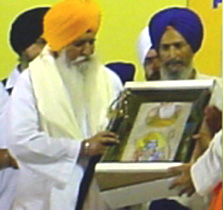
One recent instance of this is the Jathedar of the Akal Takht and others accepting pictures which expressly co-mingle Sikhi with Hinduism (with Guru Nanak Dev Ji and Sri Ram) at an RSS function. It may not seem like a big deal, but one of the RSS’s assertions is that Sikhs are derivatives of Hinduism and that the Guru’s are the descendants of the Hindu God Ram. I wonder if anyone else feels that our Jathedar’s acceptance of such a picture is a bit shady? As a Sikh I expect my leaders to stand up for Sikh beliefs and the Sikh identity – not accept memorabilia which dilutes my identity and depicts something that they sit on stages across the globe and negate.
As I write this post, I realize that some of you may be thinking that of the instance above does not amount to much, but I think it is illustrative of a much larger issue …if our leaders do not take a stand on something as simple as “Sikhi and Hinduism are not the same,” then where does that leave us as a Sikh nation? How are we to face other challenges to our identity in the West? What are our expectations of our leaders? And are there any avenues we can take to enact change?
Veerharinder Singh and Pawanjot Kaur were married on November 1, 2001. Apparently this ill-fated relationship started off on the wrong foot.
Veerharinder had said he was a graduate owning gas stations. He turned out to be class 12 pass and an employee in a factory. Pawanjot was B.Sc medical.
Veerharinder then left for Surrey, abandoning his bride in Punjab.
Ranphool (Pawanjot’s father) claimed the man and his family were all good till they gave wrong information to the embassy that had rejected the papers of my daughter to emigrate to Canada.
As if abandoning the bride wasn’t enough: Veerharinder demanded 30 lakh (a mere $75,000!) for dowry, and his father was camped out in Punjab, waiting to receive this from Pawanjot’s family.
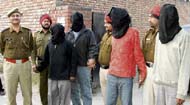 Pawanjot came to Canada on her own and stayed with her grandfather in Edmonton when Veerinder’s family rejected her. Then, the plot thickens… Veerharinder tried to teach his father-in-law a lesson for sending Pawanjot to Canada.
Pawanjot came to Canada on her own and stayed with her grandfather in Edmonton when Veerinder’s family rejected her. Then, the plot thickens… Veerharinder tried to teach his father-in-law a lesson for sending Pawanjot to Canada.
Police charges allege that the husband and his cousin hired a group of contract killers for 120,000 rupees (about $3,000) after the father of the bride could not raise the dowry for his daughter.
Luckily the killers were amateurs discussing their plan at a dhaba … where they were overheard and reported to the police.
Veerharinder, how do you face yourself in the mirror?
Although this blog is new, I couldn’t resist getting the in the ‘countdown’ spirit with another useless list. Oh well, the end of the calendar year (although not the Nanakshahi Sikh calendar) gives us some time for thoughts and reflections. Here is my list of this year’s top 5 events that will influence 2008 and beyond.
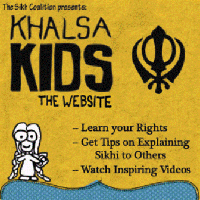 5. Khalsa Kids – The Sikh diaspora is coming of age and creating new tools for the community. It has been over ten years since the suicide of 13 year old Vijay Singh in the UK after being repeatedly bullied in school. Unfortunately the bullying of young Sikh boys tends to be the rule and not the exception. The Sikh Coalition released a harrowing report that showed 77.5% of Sikh boys surveyed in Queens reported being teased or harassed on account of their Sikh identity. However, the community is beginning to respond and it reveals a coming of age here in the US Sikh population.
5. Khalsa Kids – The Sikh diaspora is coming of age and creating new tools for the community. It has been over ten years since the suicide of 13 year old Vijay Singh in the UK after being repeatedly bullied in school. Unfortunately the bullying of young Sikh boys tends to be the rule and not the exception. The Sikh Coalition released a harrowing report that showed 77.5% of Sikh boys surveyed in Queens reported being teased or harassed on account of their Sikh identity. However, the community is beginning to respond and it reveals a coming of age here in the US Sikh population.
A Sikh teacher, SriNam Singh Khalsa, recently published Break the Bully Cycle: Intervention Techniques and Activities to Create a Respectful School Community. This book provides strategies to enable school teachers and administrators in helping not only the victims of bullies, but also the bullies themselves. Another book, written by a Sikh high school student, Harkirat Singh Hansra, helps to give non-Sikhs, especially students, a basic understanding on Sikhi. Titled Liberty at Stake – Sikhs: The Most Visible Yet Understood Minority in America provides a Sikh teenager’s perspective of the world around him. Finally, perhaps the most innovative project was the Sikh Coalition’s launch of its Khalsa Kids website. Fun, interactive, and professional the Sikh Coalition must be commended for creating a real tool that will serve Sikh communities throughout the world. That the Sikh community has a multi-faceted approach and is using its resources is a great success of 2007 that will set the bar for 2008 and beyond.
 As we celebrate the New Year and look forward to what it holds in store for us (at the very least an election!), it is important to look back and remember what we have experienced as a community this past year. In celebration of the Sikh Diaspora and what it represents to us today, here is a look back at some of the global stories, books, films and websites that impacted our community in 2007.
As we celebrate the New Year and look forward to what it holds in store for us (at the very least an election!), it is important to look back and remember what we have experienced as a community this past year. In celebration of the Sikh Diaspora and what it represents to us today, here is a look back at some of the global stories, books, films and websites that impacted our community in 2007.
- Young Sikh Men Get Haircuts, Annoying Their Elders. “It’s usually college-going students who are more worried about looking good than about their spiritual identity…[It] releases a certain amount of pressure.”
- A new website, Sikh Chic, discussing articles related to the art and culture of the Sikh Diaspora was launched. “We need to re-think the Sikh idea in the North American idiom, in our language, in our way of articulating our thoughts.”
- The Sikh clergy issues an edict directing the Sikh Sangat to snap all ties, including social, religious and political, with Baba Ram Rahim Gurmit, head, Dera Sacha Sauda, and its followers.
- Several books for and about Sikhs are published and discussed including Shame, Sacred Games, Sikhs in Britain, Londonstani, Sikhs Unlimited, I See No Stranger: Early Sikh Art and Devotion.
- A Sikh-Canadian group slams the long-standing immigration policy that forces people with the surname Singh or Kaur to change their last names. It was later noted that the immigration letter sent out was poorly worded.
Yesterday, we received a special request for a blog topic. The urgency and pain expressed in the comment inspired me to write.
 In 2006, the Jakara Movement sponsored an online survey that revealed a horrifying 1 in 4 women that took the survey revealed that they had been the victim of sexual abuse, while over half of the Sikh women responded that they know someone who had been abused. The results only confirm what many of us in the community already know.
In 2006, the Jakara Movement sponsored an online survey that revealed a horrifying 1 in 4 women that took the survey revealed that they had been the victim of sexual abuse, while over half of the Sikh women responded that they know someone who had been abused. The results only confirm what many of us in the community already know.
The commenter specifically asked for us to look at how authority and hierarchies create an environment for such things to occur. Press reports of Gurdwara gianis that abuse their position are not hard to find, while those of Dera Babas, whether Dera Sacha Sauda, Nanaksar, Daljit Singh of Chicago, Mann Singh Pehowa or Sai Baba are even more common. (We will leave aside the problems of ALL Dera Babas for another post).
None should ever excuse such behavior nor try to hide it. If an allegation is made, a full inquiry should be made with the burden of proof on the accused. I do believe that this allegation is the one exception where the burden should be on the accused rather than the one making the allegations. (Unfortunately, many members of our community abuse the justice system by also alleging false cases due to personal dispute and rivalries.) Many with authority feel a sense of ‘invincibility’ that stems from their ego (haumai). The victims (both females and yes, even males) are silenced and their enforced silence deafens the entire community. We need to find a community solution to the problem.
How do you know you’ve made it as a notable community? When Jeopardy! gives you your own category of clues… twice! That’s right, two nights ago my favorite game show featured the category “Punjab.” Because I can only remember three clues, those are the ones I’ll share:
 100: After 1947, the territory known as the Punjab was divided between India and this country.
100: After 1947, the territory known as the Punjab was divided between India and this country.
400: This power fought two wars, unsuccessfully, before finally annexing the territory outright in the 1800s.
500: With origins in both Hinduism and Islam, this is the region’s major religion.
Now I’ll be honest, the last clue kind of had me cheesed (although, how nice is it that Sikhi is the “MVP” of the category?). This is one of the most misquoted “facts” that circulates regarding the origins of the Sikh religion — that it is somehow a hybridization of Hinduism and Islam. It’s certainly true that Sikhi developed in the context of at least two major religions, but many argue that it is somehow an extenuation or “compromise” of the two. So, at what level do we nitpick about the terminology used to describe the faith?
That said, there is a universality of messages across faiths. Both Hinduism and Sikhi discuss the value of “seva,” and both believe (broadly) in reincarnation. Meanwhile, Islam and Sikhi both conceptualize the writing of their scriptures as divine revelation, and both are monotheistic (and describe Allah, or Vaheguru, in similar terms). Like Buddhism, there is a belief that one must learn to free herself from the trappings of the material world, and like Christianity, there is a larger message of humanism and love for mankind. Is it really fair, then, to limit Sikhi’s philosophy to a “religion with its origins in Hinduism and Islam”? And, given Sikhi’s egalitarian acceptance of and respect for other faith traditions (or non-existence thereof), is such a battle on phrasing “worth it”?
I’m a bit of a stickler for language. While I’m not the most articulate person, I do feel that framing and terminology have power. I think it’s important to offer a coherent narrative that explains the difference between Sikhi and other faiths while making it clear that a delineation is not a derogation. There is nothing shameful in distinguishing Sikhi from other faith traditions; in this case, it’s an issue of accuracy and understanding.
A couple of months ago, maybe it was many weeks, I saw on the TV show, “Cops” with utter disgust a Bapuji and Biji, being a form of “entertainment” for a domestic violence assault. Along with my disgust, anger, and sorrow I had a “well yea it happens … you think it’s that shocking” attitude. I wasn’t “shaken” or “shocked” by the show because I knew this story was a reflection of what happens in many Punjabi Sikh homes in  thing again … what if Bibiji needs to leave him, permanently or just for a while, but has no family in the United States are close to the Central Valley where she may be working… where will she go? Plus, just the utter embarrassment she may feel because in their “budhaphaa” (i.e. older age) they are still facing this issue and she has to ask for help.
thing again … what if Bibiji needs to leave him, permanently or just for a while, but has no family in the United States are close to the Central Valley where she may be working… where will she go? Plus, just the utter embarrassment she may feel because in their “budhaphaa” (i.e. older age) they are still facing this issue and she has to ask for help.
I’m wondering what anti-domestic violence advocacy campaigns and shelters are doing to address the issues faced by elderly women. The advocacy and services they offer save lives and offer hope to help women escape a cycle of violence. It think they tend to be geared more towards meeting the needs of younger women and their children. They may not explicitly state that or have policies restricting elderly women from receiving their much-needed services, but I have a feeling younger women frequent them more often not because more younger women may face the issue of domestic violence or live in the Diaspora. I think it’s because elderly women may just be more hesitant to reach out for their services at their age. I wonder what services these women’s organizations have to meet the needs of elderly South Asian, specifically Punjabi Sikh, women who are primarily of immigrant background? The circumstances of elderly Punjabi Sikh women are similar but also very different compared to those who are younger. Factors leading to these differences range from length of marriage to having grandchildren as well as son and daughter-in-laws. The reasons and circumstances for immigration may be different as well. Some elderly couples immigrate, at times, to help build an economic base and
Any ideas about domestic abuse in South Asian elderly couples, specifically those of Punjabi Sikh background? How about available resources?
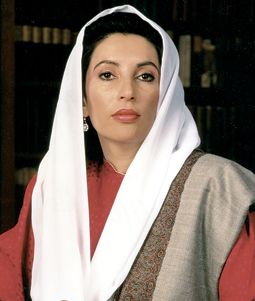 The news is ablaze; the blogs are on fire; Rawalpindi and Sind are burning. Former Pakistani Prime Minister, Benazir Bhutto, was assassinated today at a political rally in Rawalpindi, Pakistan.
The news is ablaze; the blogs are on fire; Rawalpindi and Sind are burning. Former Pakistani Prime Minister, Benazir Bhutto, was assassinated today at a political rally in Rawalpindi, Pakistan.
While few Sikhs will shed any tears for Bhutto as she was personally responsible for the deaths of many Sikhs during the 1980s, the current crisis of the neighboring state cannot be ignored.
The ramifications for the global ‘war on terror’ are yet unknown. In Pakistani circles, most believed that a Washington-brokered power-sharing agreement had been reached between General Musharraf and Bhutto. Despite the General’s declaration of ‘martial law,’ Bhutto’s criticisms had been muted. However her outcry became shriller as opposition within her political party called for her stronger support towards its beleaguered party members, who were coming under arrest and greater security scrutiny. In recent times the relationship (at least in the media) has soured.
The ramifications for Pakistani democracy may be severe. Many are speculating that Musharraf will use this event to postpone (perhaps indefinitely) the upcoming elections and further trample on any that oppose him.
Does this sound familiar? It sounds like it could be many areas in India, including Punjab…

The preference for boys here is centuries old and was rooted in part in an agrarian society that relied on sons to do the hard work on family farms…[A son’s]… elevated status came with certain perquisites — men received their families’ inheritance — but also responsibilities. Once the eldest son married, he and his wife went to live with his family; he was expected to support his parents financially while his wife was expected to care for them in their old age.
This sounds familiar too:
“In the old days, when there was no adequate social safety net, parents regarded having a son as kind of making an investment for old age security,” … It was common for married men to feel ashamed if they had no sons. Some went so far as to divorce wives who did not bear boys.
This NY Times article isn’t talking about India, …. it’s talking about South Korea, where an interesting reversal is taking place.
In South Korea, once one of Asia’s most rigidly patriarchal societies, a centuries-old preference for baby boys is fast receding. And that has led to what seems to be a decrease in the number of abortions performed after ultrasounds that reveal the sex of a fetus.
Hmm… a reversal of son preference? How did that come about?
The most important factor in changing attitudes toward girls was the radical shift in the country’s economy that opened the doors to women in the work force as never before and dismantled long-held traditions, which so devalued daughters that mothers would often apologize for giving birth to a girl.
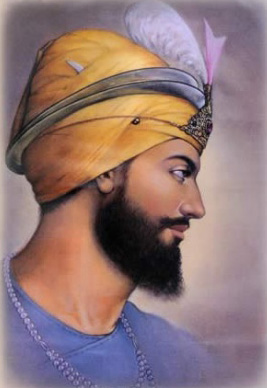 This time of the year always makes me wonder how children in our community perceive Christmas. As a child I don’t remember having a Christmas tree in my house or any talk about Santa Claus coming with gifts (maybe my parents wanted to “keep it real” for me!). However, now that I have a niece and nephew, I do wonder how to create a sense of celebration for them so they don’t feel isolated from their non-Sikh friends. New Year’s day has always held more significance for me, and our family tradition is starting the year with a sense of peace and renewal by attending the Gurdwara.
This time of the year always makes me wonder how children in our community perceive Christmas. As a child I don’t remember having a Christmas tree in my house or any talk about Santa Claus coming with gifts (maybe my parents wanted to “keep it real” for me!). However, now that I have a niece and nephew, I do wonder how to create a sense of celebration for them so they don’t feel isolated from their non-Sikh friends. New Year’s day has always held more significance for me, and our family tradition is starting the year with a sense of peace and renewal by attending the Gurdwara.
Family friends of ours in Toronto have been creating a Sikh celebration, in a sense, for their children on Christmas day. The children put ornaments on their Khalsa Tree, and wait for Santa Singh to bring their gifts. (I am also pretty sure ladoos are awaiting him as an alternative to cookies!). They don’t celebrate the birth of Christ, but instead the birth of our tenth guru, Guru Gobind Singh Ji. When I first heard about their tradition I was impressed that someone had thought to substitute every part of the day in order to teach their children our traditions, and at the same time do the things that go along with the commercialistic nature of the holiday.
Often I find myself teaching many of my non-Sikh friends about the special days we have in our religion throughout the year. They really enjoy learning about my religion and I feel it’s important especially since they would not normally have the opportunity to be educated about Sikhs and what we stand for. One friend once commented how lucky I was to have so many days to celebrate. He was absolutely right – we really are blessed to have the opportunity to celebrate our strong history throughout the year. If as a community we can begin to incorporate the importance of our history and these days into the next generation, we can truly preserve an essence of what Sikhi has to offer.
So Modi and the BJP win again. Kill 2,000 Muslims and become Chief Minister. Hardly new. Kill 3,000 Sikhs and become Minister for Overseas Indian Affairs.
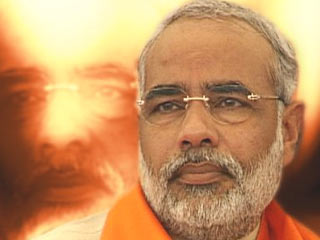 Reasons for Modi’s victory will soon flow: his cult of personality, the use of xenophobic propaganda against “jihadis” (Read: Muslims), the reaction against the anti-Modi media, slogans of development success and Gujarat’s economic boom in the last few years. While the majority in Gujarat will celebrate their victory, I am left wondering.
Reasons for Modi’s victory will soon flow: his cult of personality, the use of xenophobic propaganda against “jihadis” (Read: Muslims), the reaction against the anti-Modi media, slogans of development success and Gujarat’s economic boom in the last few years. While the majority in Gujarat will celebrate their victory, I am left wondering.
Does development trump human rights?
Modi is no longer a Gujarati politician. He is an international Indian star. Nowhere is his popularity as strong as that which he receives from the Patels and NRIs in America. While some assumed the Congress victory in 2004 was a turning point in the electorate, the sheer popularity of Modi’s brand of Hindutva has made him a national level politician. That Sonia Gandhi had to directly intervene to challenge Modi and then to fail will catapult Modi’s stock. He is Hindutva’s celebrity.
The Congress Party’s history and rhetoric offers few opportunities for ambitious political elites. In the new India it is Hindutva that represents the greatest possibility for change. Modi is this change. He is India.
Gurharpal Singh in his Ethnic Conflict in India: A Case-Study of Punjab made this same prediction eight years ago. He saw two possibilities of the Hindutva end game,
either towards a continental assertion of Hindutva or its contraction to the core.
Either the Hindutva agenda will reign supreme or the periphery regions (Kashmir, Punjab, Nagaland, Assam, etc.) that are not Hindu and can mobilize on non-Hindu icons and culture will look for another alternative.
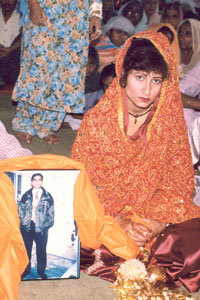 Blimey. Last week National Public Radio picked up a story about one of the newest scams to hit the community, that of Runaway Grooms. If NPR is doing a story about Punjabis and/or Sikhs, you’d hope it would be for something like this instead. So forgive me, if I think it’s disappointing (although maybe not surprising) that instead our community is the focus of an issue that seems to be quite prevalent in the Punjabi community in India and has links to England and North America aswell. Actually, it is very prevalent. Data suggests that 15,000 women in Punjab alone have been victim to men who, after getting married (and after taking the dowry money) return abroad never to be heard from again. Yup, these guys pull a Houdini. Here’s an excerpt from the NPR piece:
Blimey. Last week National Public Radio picked up a story about one of the newest scams to hit the community, that of Runaway Grooms. If NPR is doing a story about Punjabis and/or Sikhs, you’d hope it would be for something like this instead. So forgive me, if I think it’s disappointing (although maybe not surprising) that instead our community is the focus of an issue that seems to be quite prevalent in the Punjabi community in India and has links to England and North America aswell. Actually, it is very prevalent. Data suggests that 15,000 women in Punjab alone have been victim to men who, after getting married (and after taking the dowry money) return abroad never to be heard from again. Yup, these guys pull a Houdini. Here’s an excerpt from the NPR piece:
Satwant Kaur was full of hope and happiness on the day she got married. She had landed a husband who lived and worked overseas in Italy before returning to India to find a bride. She was looking forward to leaving her home in Punjab, northern India, for an exciting new life in Europe. Less than a week after the wedding, it became obvious that her husband, Sarwan Singh, had no intention of taking her with him back to Italy. She was the victim of a scam.
Women in India pay these men a hefty dowry in anticipation of the marriage and the promise to travel with them abroad. However, as it’s becoming increasingly clear, these men have NO intention of bringing their brides overseas and instead extort them of, what often is, their family’s savings. NPR may have picked this story up just recently, but this tale is not new. Ali Kazimi, a filmmaker, made a documentary about this called Runaway Grooms which has screened at various film festivals across the country. It’s a powerful film that leaves you in disbelief that this continues to happen in our community. What impacted me most about this film, however, was the strength that existed within these women who had quite clearly been abandoned. It reminded me of the same strength I see from Punjabi and Sikh women, that I know, who have come through similar tribulations.
At the root of this problem, and many others, is the tradition of daaj or dowry. Is this going away or has it’s form simply changed? I would suggest listening to the NPR piece and watching Runaway Grooms and then thinking about the impact this is having on our community. Our religion does not condone injustice, but more often than not, when those in our community are victims of fraud and lies, we always seem to look the other way…
Since May of this year a competition has raged throughout the Indian subcontinent. On Saturday November 24th, 2007, the results were in…the 1st Amul Star Voice of India: Ishmeet Singh from Ludhiana.
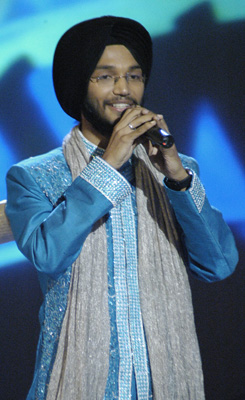 For those in the diaspora, who flip past the ZeeTV, Sony and all those other station as they channel surf, Amul Star Voice of India (SVOI) is the desi version of American Idol. After auditions throughout India, competitors are selected by the judges only to be later subjected to audience voting. Television viewers submitted text messages and finally after six months a winner was chosen.
For those in the diaspora, who flip past the ZeeTV, Sony and all those other station as they channel surf, Amul Star Voice of India (SVOI) is the desi version of American Idol. After auditions throughout India, competitors are selected by the judges only to be later subjected to audience voting. Television viewers submitted text messages and finally after six months a winner was chosen.
The famed Lata Mangeshkar declared Ishmeet Singh from Ludhiana, Punjab the winner. However, the win was far from guaranteed. The runner-up from Uttar Pradesh, Harshit Saxena, had been much more popular by the voters from the West Zone (60% of the votes), East Zone (52% of the votes), and the South Zone (55% of the votes). However, the winner of the competition was not to be decided on the number of winning zones, but rather the gross total. It was here that the Punjab factor kicked in and propelled Ishmeet Singh to victory.
While the blogosphere and message boards are aflame about the results, my purpose here isn’t to engage on the merits of the Ishmeet’s voice or the fairness of the competition methodology. However, the results do bring to the forefront a number of different issues.
An important result of the competition is to highlight Punjab’s ‘tele-density’. Prior to the announcement of the SVOI winner, many members of the interviewed Indian public lamented that Ishmeet would be catapulted to victory based on the fact that while the national telephone per capita is 1:5, in Punjab it is almost double at 1:2. Their gloomy predictions proved correct. The sheer numbers of SMS text messages aided Ishmeet in his victory. While Punjab’s population will never give it a seat at the Lok Sabha and the national stage, its economic and telecommunication power gave it leverage in this competition. Are there other uses for such technology? The Dera Sacha Sauda incident earlier in the year also shows telecommunications powerful ability as a political tool to rally youth support and attendance. Grassroots movements will have to be able to employ this tool to mobilize the Sikh youth and will have to figure out new ways to utilize its tremendous capabilities.
Waheguru Ji Ka Khalsa
Waheguru Ji Ki Fateh
Welcome to The Langar Hall. This is a space dedicated to the experiences, reflections, and interests of a diverse group of young individuals – tied together by our common and varied identities as Sikhs in the diaspora.
Like the many conversations that take place in langar halls around the globe, our blog posts will sweep across a gamut of topics from Gurbani and Seva to Bhangra and Politics. We challenge ourselves to address the myriad of issues we face as individuals and as a community through a progressive lens, and reserve the right to rant, muse, and humor.
Do you have questions or the feeling that some things just have not really been explained? Then join our conversations as we untangle complexities, explore grays, or just share things we find interesting and funny.
Let us conversate!
Waheguru Ji Ka Khalsa
Waheguru Ji Ki Fateh
Welcome to The Langar Hall. This is a space dedicated to the experiences, reflections, and interests of a diverse group of young individuals – tied together by our common and varied identities as Sikhs in the diaspora.
Like the many conversations that take place in langar halls around the globe, our blog posts will sweep across a gamut of topics from Gurbani and Seva to Bhangra and Politics. We challenge ourselves to address the myriad of issues we face as individuals and as a community through a progressive lens, and reserve the right to rant, muse, and humor.
Do you have questions or the feeling that some things just have not really been explained? Then join our conversations as we untangle complexities, explore grays, or just share things we find interesting and funny.
Let us converse!
